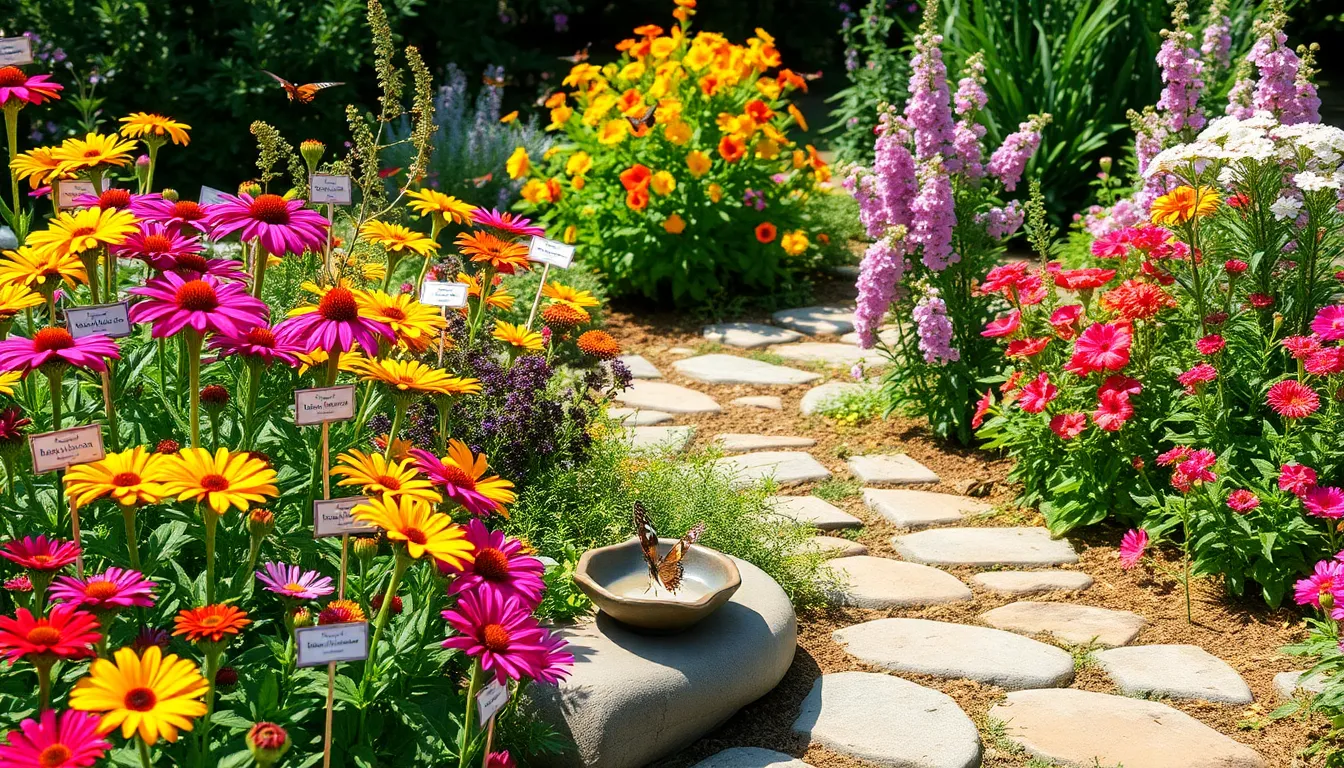Imagine stepping into a garden alive with color, movement, and the delicate flutter of butterflies dancing from flower to flower. Whether you’re a green-thumbed veteran or a gardening novice just starting your journey, creating a butterfly garden is a rewarding project that transforms any outdoor space into a vibrant haven. This guide is your gateway to designing a sanctuary that not only delights the senses but also supports local ecosystems by attracting these graceful pollinators.
For both seasoned gardeners and enthusiastic beginners, this collection of tips is packed with practical wisdom and insights. You’ll discover how to select the perfect plants, design layouts that cater to butterflies’ needs, and create a sustainable environment that thrives with life. By the end of this guide, you’ll feel equipped and inspired to cultivate a butterfly garden that flourishes, offering endless joy and a sense of accomplishment as you watch your outdoor masterpiece come to life.
Plant Nectar-Rich Flower Varieties
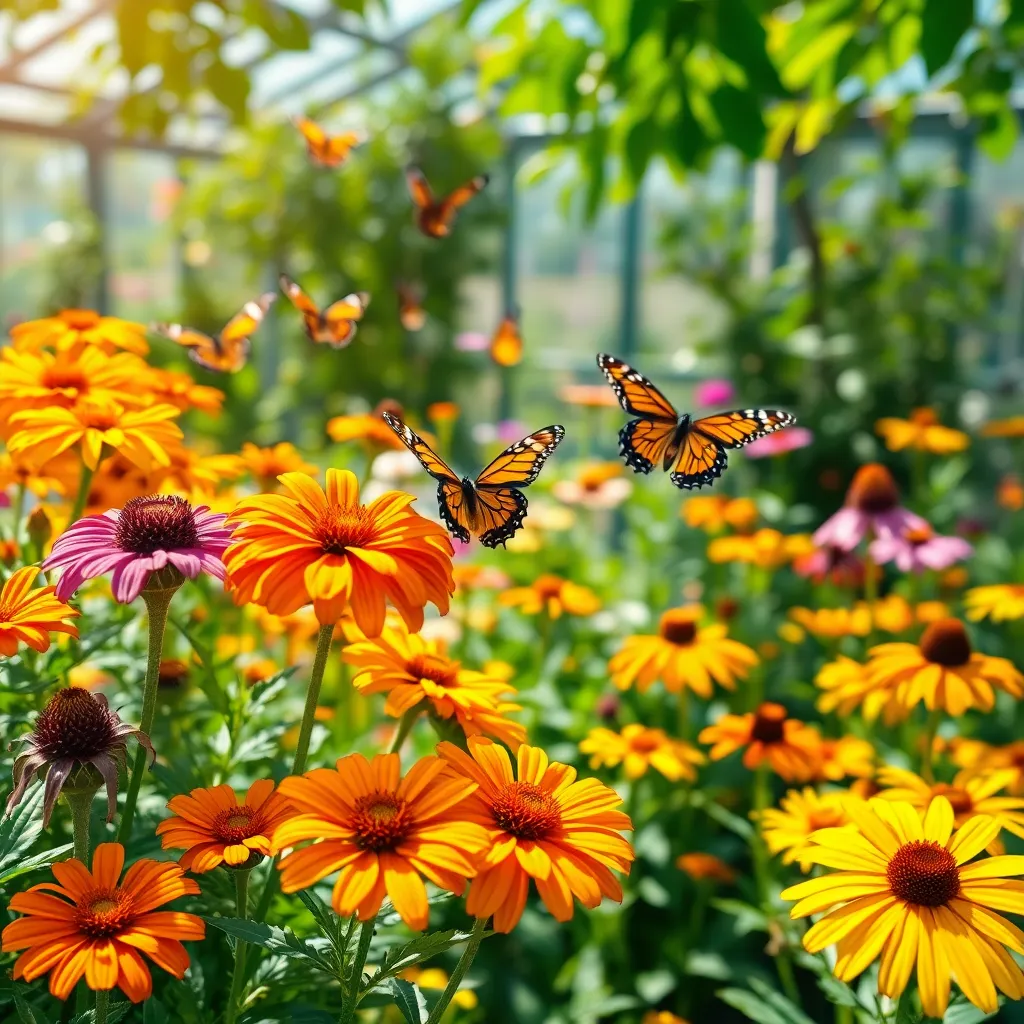
To attract a variety of butterflies to your garden, it’s essential to plant nectar-rich flower varieties. Consider planting milkweed, coneflower, and butterfly bush, as they are known favorites among these pollinators.
Milkweed not only provides nectar but also serves as a host plant for monarch butterfly caterpillars. Plant milkweed in well-drained soil and ensure it receives full sun for optimal growth.
Butterfly bushes are another top choice, offering vibrant blooms that butterflies can’t resist. Prune them in early spring to encourage more blossoms throughout the season, and provide them with moderate watering to keep them thriving.
For gardeners looking to add a splash of color while attracting butterflies, coneflowers are a great option. They thrive in sandy or loamy soil with good drainage and should be watered deeply but infrequently to encourage deep root growth.
Include Host Plants for Caterpillars
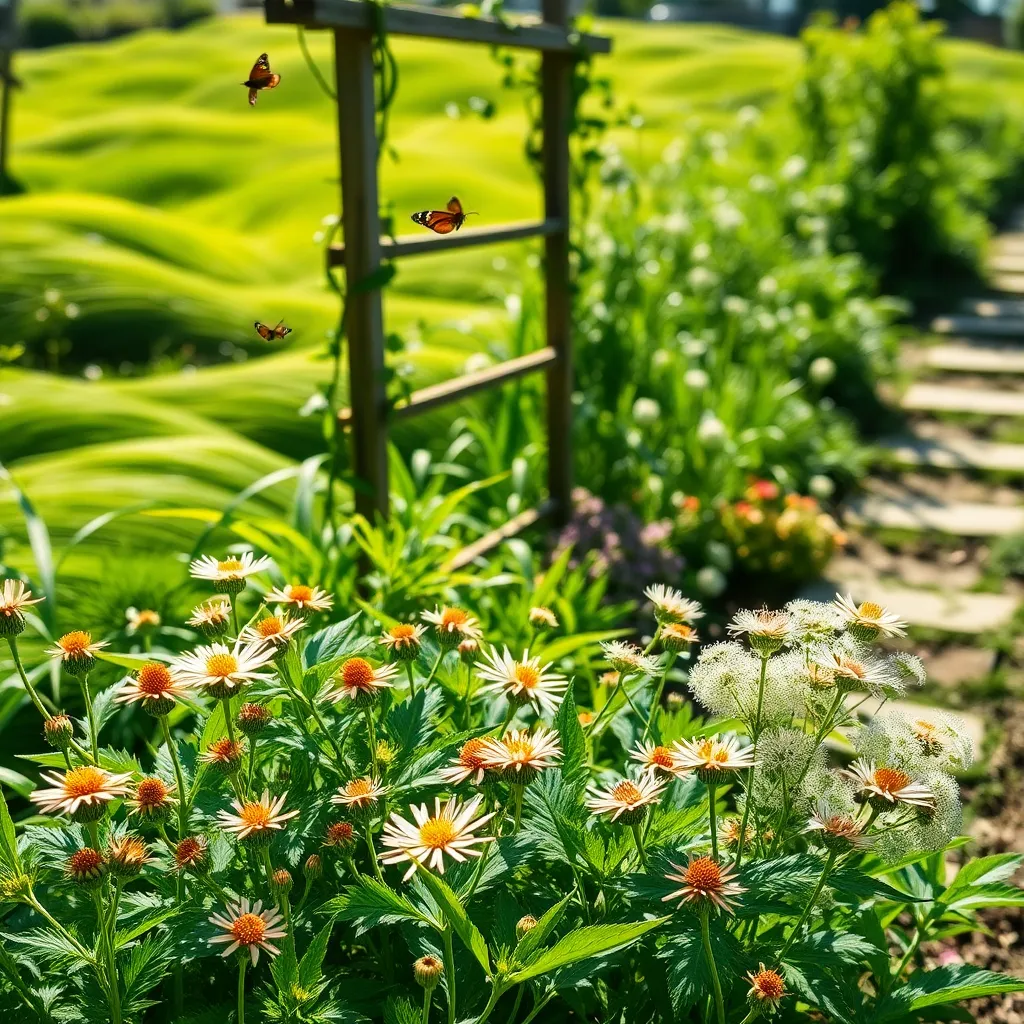
To attract butterflies, it’s essential to include host plants for caterpillars in your garden. These plants provide food for caterpillars, ensuring that they grow into healthy adult butterflies.
Milkweed is a must-have for monarch caterpillars, which rely exclusively on this plant. Plant milkweed in well-drained soil and position it in a sunny spot to encourage robust growth.
Consider adding parsley, dill, and fennel as host plants for swallowtail caterpillars. These herbs thrive in sunny locations with moderately fertile, well-draining soil, making them easy additions to most gardens.
For a broader appeal to various butterfly species, include a mix of native grasses and shrubs like spicebush and wild cherry. These plants provide essential habitats and food sources, supporting a diverse butterfly population.
Regularly check your host plants for caterpillars and signs of feeding, which indicate your garden is thriving as a butterfly habitat. Ensure the soil remains moist but not waterlogged, and avoid using pesticides to protect these vital insects.
Create Sunlit and Sheltered Spots
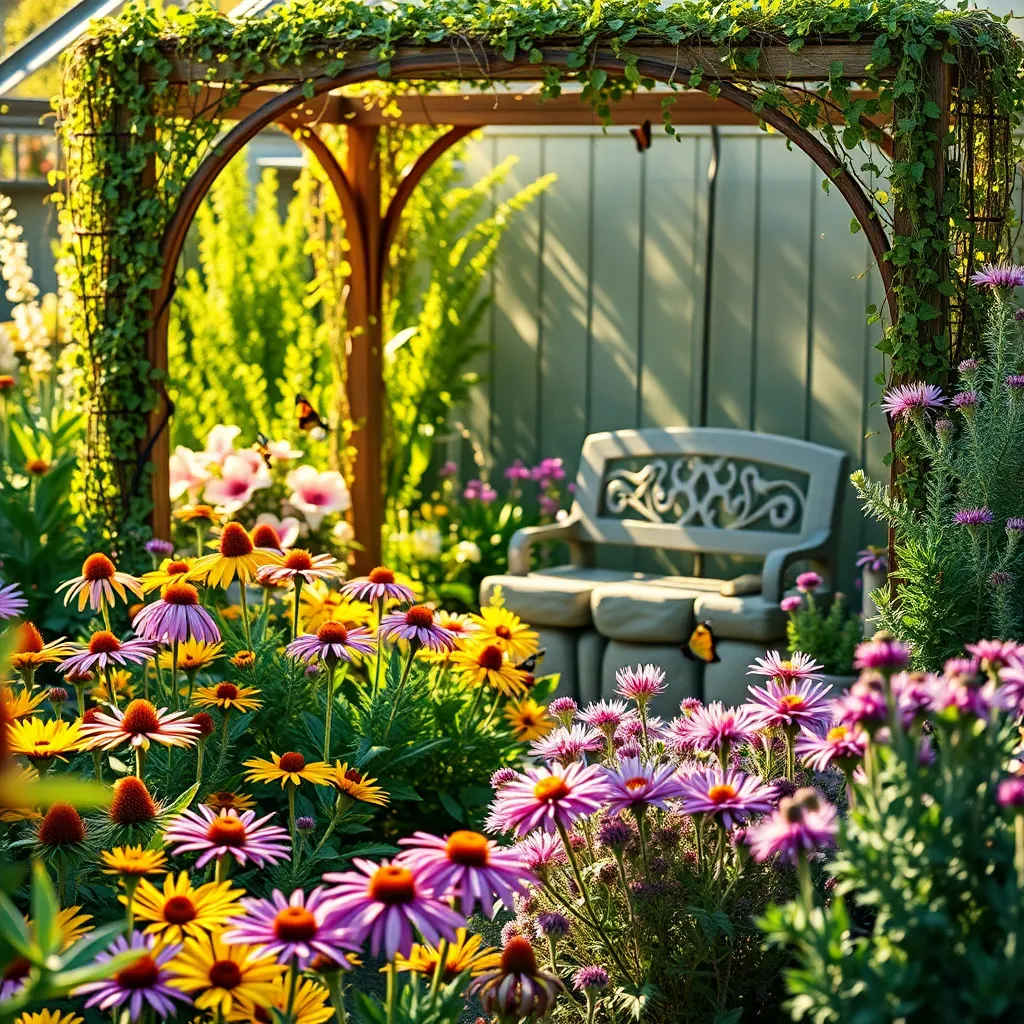
Creating sunlit and sheltered spots is essential for a thriving butterfly garden. Butterflies enjoy basking in the sun, which helps them regulate their body temperature, so ensure you have areas with full sun exposure for the majority of the day.
Position your garden to capture the morning sun, as this is when butterflies are most active. Avoid planting trees or tall structures that could cast shadows over your sunlit patches, which might deter butterflies from visiting.
In addition to sunlit areas, it’s crucial to provide sheltered spots where butterflies can rest and hide from wind and predators. Use dense shrubs or tall grasses in strategic locations to create natural windbreaks and resting areas.
Consider planting native grasses like switchgrass or little bluestem, which not only provide shelter but also contribute to the natural ecosystem. These grasses can also serve as overwintering sites for some butterfly species, making your garden a year-round haven.
Avoid Pesticides for Eco-Friendly Growth
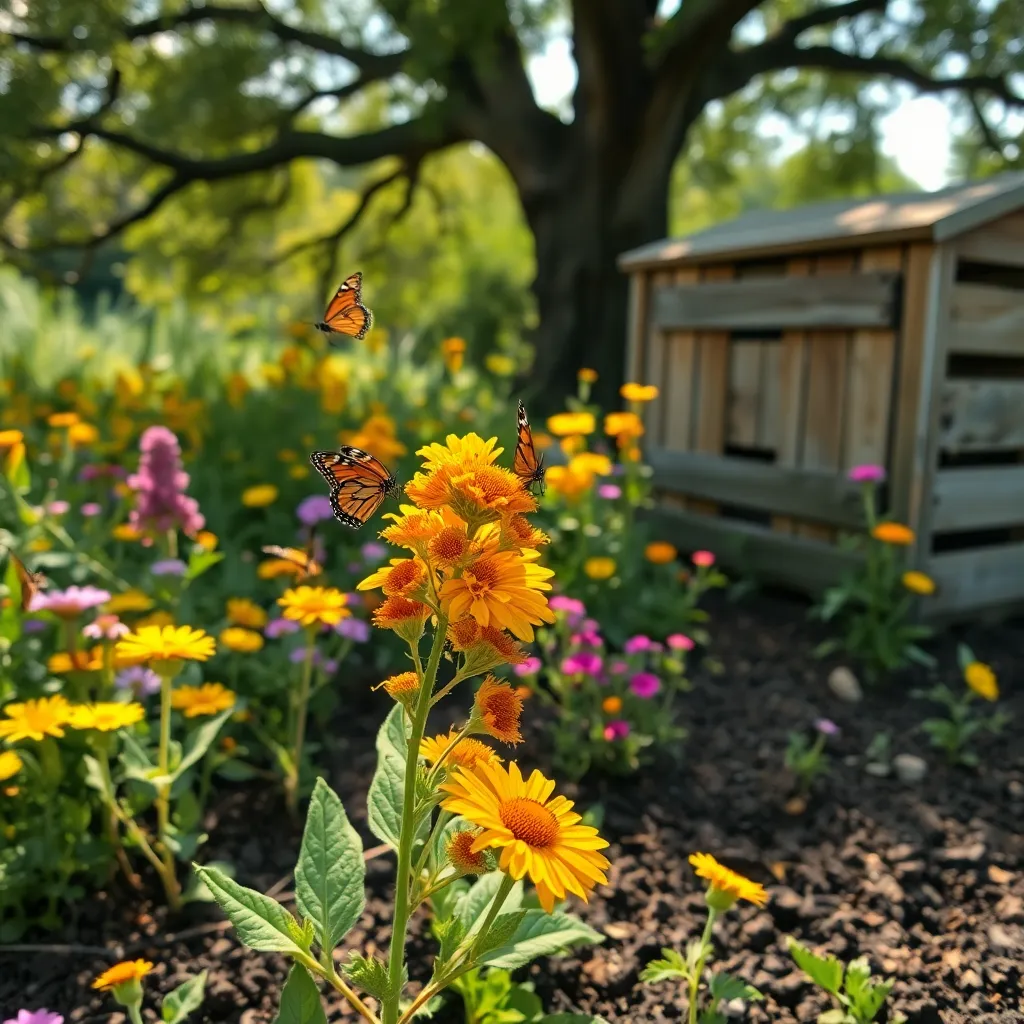
Creating a butterfly garden is a wonderful way to invite these beautiful pollinators into your space, but it’s important to avoid using pesticides to maintain an eco-friendly environment. Pesticides can be harmful to butterflies and other beneficial insects, disrupting the delicate balance of your garden’s ecosystem.
Instead of pesticides, consider using natural methods to manage pests. Introducing beneficial insects like ladybugs and lacewings can help control aphid populations naturally, without the need for chemicals.
Another effective strategy is to plant a variety of flowers and herbs that naturally repel pests. Plants such as marigolds, lavender, and mint can deter unwanted insects while providing nectar sources for butterflies.
For those dealing with more persistent pest issues, homemade remedies can be a safe alternative. A simple solution of water and a few drops of dish soap can be sprayed on plants to manage soft-bodied insects like aphids.
Advanced gardeners might consider setting up a small composting system to improve soil health and strengthen plants against pests naturally. Rich, healthy soil increases plant resistance to diseases and pests, reducing the need for intervention.
Regular monitoring of your plants is crucial to catch any pest issues early. By closely observing your garden, you can take prompt action and maintain a thriving butterfly habitat without harmful chemicals.
Provide Water Sources Like Puddles

Butterflies are attracted to water sources, so creating small puddles in your garden can be highly beneficial. These puddles provide both hydration and minerals, essential for the health and vitality of butterflies.
To create an ideal puddle, simply dig a shallow depression in the soil and fill it with water. Adding a few flat stones or sand can help mimic natural conditions and offer butterflies a safe landing to drink.
Regularly check and replenish these puddles to ensure they remain inviting. During hot weather, evaporation can occur quickly, so frequent refilling may be necessary to keep them functional.
For a more advanced approach, consider incorporating a small drip system to keep the puddles consistently filled. This not only ensures a steady water source but also adds a gentle sound that can attract more butterflies to your garden.
Conclusion: Growing Success with These Plants
Creating a butterfly garden is a lot like nurturing relationships—it requires intention, patience, and ongoing care. In our journey through this article, we’ve explored five essential relationship concepts: understanding the needs of others (just like choosing the right plants for butterflies), creating a welcoming environment (akin to setting up a safe space), maintaining regular communication (similar to ensuring your garden thrives through proper watering), embracing change (like adapting your garden through the seasons), and celebrating growth and milestones (much like enjoying the blossoming of your garden).
Now, it’s time to take action. Consider initiating a conversation with someone important in your life today, using these principles as your guide. As you build these connections, save or bookmark this article to revisit these valuable tips whenever you need a reminder.
Remember, relationships, like gardens, flourish with consistent care and attention. Look forward to a future where your relationships are as vibrant and fulfilling as a well-tended butterfly garden. Let this be your inspiration to cultivate bonds that flutter with life and joy.

